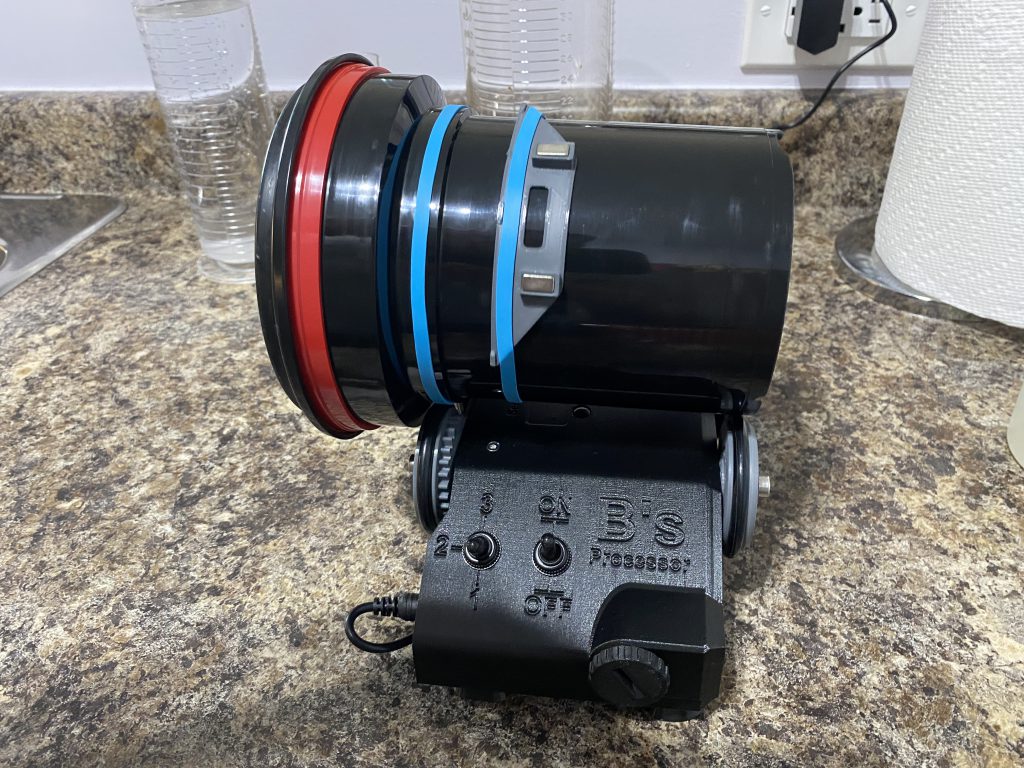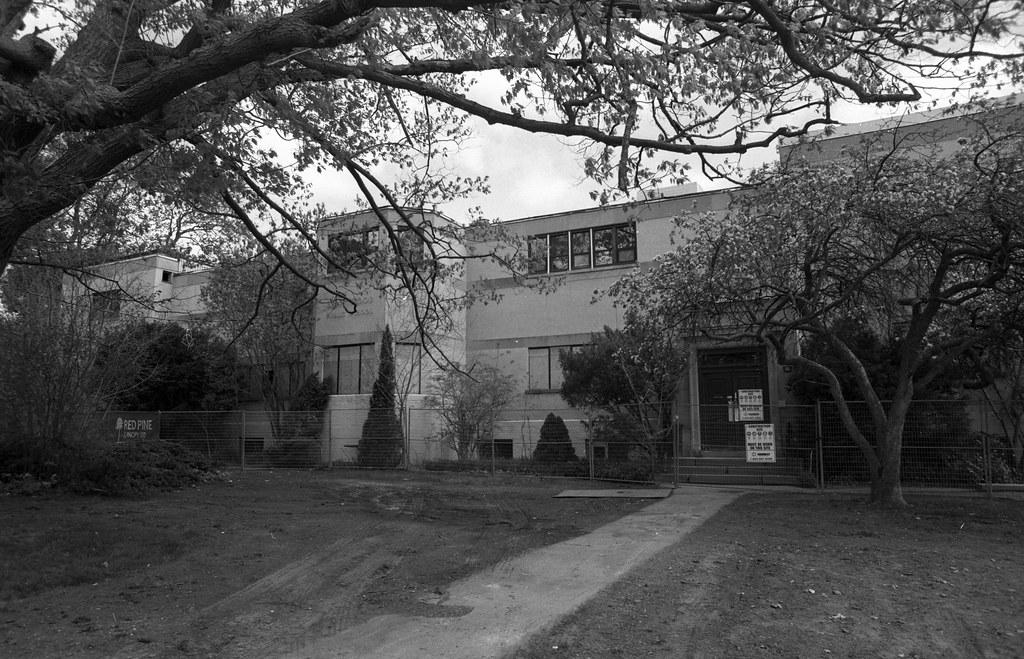When it comes to assistance with long processing times or the need for constant agitation, there aren’t that many options out there today. Sure there is the original Jobo system, but these are completely closed systems that often carry a high startup cost. And on the opposite end of the spectrum are the Besler and Unicolor Cibachrome bases and tanks. But what about something new, using modern solutions. Last year I had the chance to try out one such system, the AuRA film processor, and it certainly made an impression on me and my processing. Sadly these aren’t yet for sale, and given the technology behind them, they weren’t going to be an affordable option. But someone in the Negative Positives Podcast Facebook group turned me towards the B’s processor.

Don’t let looks fool you; despite its outward appearance, the B’s Process is a solidly built machine. The exterior body is 3D printed, but the internals are fabricated from metal, and the external gears and wheels are moulded plastic with proper rubber gaskets. My favourite part is the heavy-duty rubber-coated switches that control the processing mode and the power. Overall I find the machine well built; it isn’t waterproof but is certainly splash-proof, which when working around chemistry is essential. All the significant bits are covered. One of the more exciting parts of the developer is the addition of the wobble wheels. I initially didn’t overthink these, as I figured they were designed for those who used the lower amount of chemistry in the tank. I always ran with a full tank, either 500mL in my minor or 1000mL in the big. But where I found them helpful is with the large tank. In the first few rolls, I found a line at the top roll of the film. Once I put on the wobble wheels, that evened things out, and the line vanished. But make sure to only use the wobble wheels in pulse mode (1) or slow rotation (2). You risk destabilising the whole system at full speed rotation (3). The base is only one part of the equation; the second part is the sensor unit. You’ll note a space labelled sensor area and a red LED on the top of the base. When you attach the grey sensor unit to your tank, it will control the timing for all three modes and rotation direction when aligned right. When the sensor isn’t aligned, it will only spin in a single order.




Overall, the B’s Processor is easy to operate. It is easy to get up and run with only two switches to remember. The biggest issue is getting the tank mounted sensor unit appropriately aligned. It took a few tries to get things on just right. Thankfully you can dry run the tank to get things aligned right. As I mentioned earlier, you can run the processor without the sensor unit; you will have uneven processing. The best part is that nothing is permanently attached; you can quickly move the sensor units to another tank since you ‘attach’ the units to your tank with the provided rubber bands. These bands also offer means to keep the tank in the right spot on the base. If you’re working with Paterson tanks (2x 35mm unit), a band below the small ridge will hold the tank in the proper spot and prevent tracking, which will cause your sensor to move out of alignment. And then on the larger unit (3x 35mm unit), near the bottom, do the same thing. There are enough of these rubber bands provided to help keep things aligned.




I’ve been looking for a compact and easy to use the system to help even out my development. I have to pay attention and be consistent with my home development. I also didn’t want to invest in a new development system. While Jobo is the go-to standard for these things, the size is too large for a condo dweller or kitchen. And while the AuRA kit is an excellent option, the cost and availability proved to be a deterrent. And while the AuRA is a beautiful system and indeed is one that I’ll always recommend. The price and availability of the B’s Processor proved to be a far better option. Also, it’s far more compact and works flawlessly with my Paterson tanks, both my small 2 35mm tank and larger 3 35mm tank (which can also take 2 120 or 6 4×5 sheets [with my 20th Century sheet holder]). And yes, I still need to provide my timer; since I use the Massive Dev Chart app, I’m not constantly trying to adjust the times on the fly as I switch steps. And yes, I do have to recalculate my times (a 5% decrease as I use the full chemistry volume, 10-15% for the economical volume of chemistry), but the app is easily customisable. Is it perfect? No, the external sensor triggers probably a weak point of the whole processor. It can easily fall out of alignment, and it is a bit of a hack job to mount the device. But on the plus side, you can move it between tanks with little work.




Honestly, I’m happy with the device. Despite the weak points, this is probably the best thing to happen to my home processing since I started developing my own black & white film. It’s small, compact, and fits alongside all the other accessories I have. It produces excellent results and delivers consistent results without breaking the bank. You can order them online through the creator, Bounet-Photography, and at the cost of $145 (USD), it is an affordable device. They are produced in batches, and the new batch is always available on the first Saturday of each month. Each kit comes with everything you keep to get started with the accessories to equipment and two tanks. And with having a little one around the house, being able to set the tank going and then go and help out in some cases is always a plus side. But I do make sure to wash my hands first. I can’t go handling the baby with chemistry on my hands.
My biggest needs are a device that will:
1. Have a continuous mode with variable speed of the rotation
2. Have a clock wise and counter clockwise rotation with variable speed of the rotation.
I have found the continuous mode and click wise and counter clockwise in one devise, but not able to control the speed of the rotation.
Then I highly recommend the AGO processor it has those features! https://studioc41.net/2023/09/14/new-rotary-processing-solution-ago-film-processor-indiegogo-launch-3-october-2023/amp/